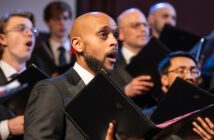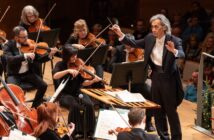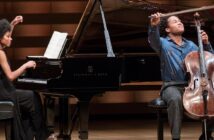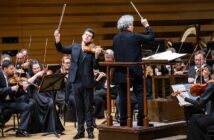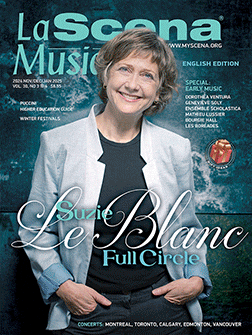This page is also available in / Cette page est également disponible en:
![]() Francais (French)
Francais (French)
On Nov. 11, 1918, at the end of the First World War, Poland became an independent state. To celebrate the centennial of this event, the Polish Institute of Arts and Sciences in Canada and the Consulate General of the Republic of Poland in Montreal are presenting a Tribute to Penderecki concert, which also celebrates the 85th anniversary of the composer Krzysztof Penderecki.
The featured work, Penderecki’s Resurrection Piano Concerto, was composed in response to the attacks of Sept. 11, 2001. “It is a very powerful work, written in the spirit of the great concertos of the 20th century,” according to pianist Justyna Gabzdyl. “The music is spectacular, almost cinematic with its martial sequences and its images of destruction. It evokes feelings of anxiety, but also of hope and even joy.”
For the soloist, the “resurrection” in question also recalls that of Poland in 1918, after 123 years of seeing its territory partitioned by neighboring powers.
The other highlight of the concert will be Vom Tode Maria (“On the Death of Mary”), created by Norbert Palej, a Polish-born composer who teaches at the University of Toronto.
Palej was looking for a subject intrinsically linked to Polish independence. “The work is inspired by the main altar of one of Poland’s most important churches, Saint Mary’s Basilica, located in Krakow’s medieval market,” he explains.
“The soaring altar is a masterpiece by German Renaissance sculptor Veit Stoss, and its centerpiece represents the Dormition of the Mother of God, symbolically named Queen of Poland by King John Casimir in 1656. The Polish people generally associate the protection of the Virgin Mary with the country’s struggle for independence.”
Vom Tode Maria presents an original instrumentation, combining the timbres of tenor trombone, tam-tam, piano and string orchestra.
Szymanowski’s Symphony No. 4 is one of Justyna Gabzdyl’s favorite works. “In its three-part structure, with a lyrical middle movement and a lively dance finale (a stylization of a Polish Oberek dance), as well as in its general character, the work has much more in common with a piano concerto than a symphony,” she says. “If the composer has chosen to make of it a symphony, it may be because of the richness of ideas and subtleties of sound and colours that characterize the orchestral part.”
Lighting and video projections will accompany the conductor’s movements in real time. This is in keeping with the wishes of conductor Paolo Bellomia and his colleague François Raymond Boyer, who want to showcase the progress of their research in music and computer engineering.
Translation by Margaret Britt
The concert brings together Orchestre 21 and pianist Justyna Gabzdyl under the baton of Paolo Bellomia. Salle Claude-Champagne, Nov. 15 at 7:30 p.m. Tickets: $ 25. www.facebook.com/Orchestre21
This page is also available in / Cette page est également disponible en:
![]() Francais (French)
Francais (French)








